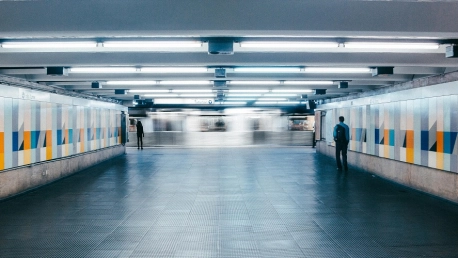Consider the modes of transportation people relied on a century ago. Trams and horses were the norm, and for the fortunate few, those nascent, cumbersome automobiles. Leap to the present, our thoroughfares brim with buses, automobiles, railways, and the swift passage of electric scooters. The essence of urban existence has been supported by public transit, facilitating our journeys from one locale to another. Yet, acknowledging the rapid expansion of urban areas and the escalating concerns over global warming, it’s time to reassess our ways of getting from point A to point B.
It’s a problem that introduces the chance for governments to improve our public transportation system. In a perfect world, all our travel methods would be eco-friendly, economically viable, and also simplify every person out there’s life. We’re witnessing a genuine evolution in how cities are revamping buses and trains, transitioning from mere modes of transport to innovative, green solutions that cater to the daily movement of millions.
Public Transport Right Now
When you start to think about different ways to get around the city, what pops into your mind first? Buses trundling down the street, subways rumbling beneath your feet, or trains whisking people to their next stop? Well, this transportation is what makes the world go round, it’s what makes it possible for millions of people to get to work and school and everything in between.
However, pollution is something we need to think about, seeing as buses and old trains aren’t exactly quiet or kind to the environment. Granted, they’ve been doing what they were built for and have been efficient enough for what we could do technologically at that point in time, but times have changed, and now they have to as well. And let’s not even get started on inefficiency. Delays, breakdowns, and routes that haven’t seen an update in ages make you wonder if there’s a better way.
Why We Need Sustainable Solutions
It would be great if all of us could get around town without playing our part in a pollution-pumping, traffic-clogging nightmare. Just about any person would love to contribute to a greener and healthier planet just by changing the way they get to work. But only if it doesn’t interfere with their normal way of life or burn a hole in their wallet, which is absolutely fair. This all would be made possible by buses, trains, and subways that run on clean energy, have enough seats for everyone, and actually arrive on time.
The Importance of Sustainability in Urban Planning
As our cities grow bigger and busier, the way we move around them needs a serious upgrade. Urban planning isn’t just about building more roads and hoping for the best. It’s about designing cities that are livable, breathable, and moveable. Integrating sustainable public transport into the heart of urban planning means we’re thinking about how to make our cities better places to live, not just bigger places to get lost in.
The Integration of Ride-Sharing Services with Public Transport Networks
Ride-sharing services have become a staple in how we think about getting places. But here’s the kicker: integrating these services with traditional public transport networks is like unlocking a new level of city mobility. It means that the first and last leg of your journey can be seamlessly connected to your bus or train ride, making public transport a more viable option for more people. This combo approach tackles the issue of “last-mile” connectivity and is a big step toward reducing the number of cars on the road.
Governments are getting behind these innovations, recognizing that the future of public transport is about more than just getting from A to B—it’s about making the journey cleaner, greener, and more inclusive. These are the kinds of changes that can transform a city and how we live in it.
Challenges to Implementation
Sure, there are truly some amazing things happening in public transport, but it’s not just a walk around the park to make these innovations happen and actually function optimally. Bringing them to life presents some obstacles.
Financial Constraints and the Need for Investment
Money talks, especially when it comes to overhauling public transport systems. These upgrades require some serious cash, and not just for the shiny new tech. We’re talking infrastructure, maintenance, training—you name it. Finding the funds to kick-start and sustain these projects is a major challenge for governments. It’s about investing today for a payoff that’s down the road, which can be a hard sell in tight budget times.
Balance Between Technological Innovation and Practicality
Thinking about all these different tech innovations is great, but for it to only make sense on paper isn’t enough. For example, driverless buses almost sound like something from a sci-fi movie but getting them out on the streets will mean they have to be safe and reliable. And all of this while ensuring that they’re actually useful to the entire public. It’s a balance between pushing the envelope and making sure the envelope can be delivered efficiently and effectively.
Public Resistance to Changing Their Transportation Habits
Change can be hard, especially when it messes with our daily routines. This applies to the little things in life and also the colossal lifestyle aspects like transportation. To be honest, not a lot of people would say yes to giving up their car and riding a bike to work instead. And that’s totally fine. We all want to be as safe and comfortable as possible. There’s also a bit of nostalgia for the way things were and a bit of skepticism about whether these newfangled ideas will actually work. That’s why governments and transport authorities have to not only roll out these innovations but also absolutely win over the hearts and minds of the people who will be using them.
Final Thoughts
Opting for public transport is a very important piece of the bigger picture when we’re looking to live a greener life and preserve the planet. Cities are only getting bigger which means the need for transport is growing right alongside it, and while the planet is only getting warmer each and every year, there’s still time to change it all and turn the tables.
It’s true the challenges are genuinely big, but the opportunities are promising and well within our means to utilize and use as weapons for good. If you think about it, if all of us changed our ways, it’s not only the planet that would benefit but every individual living in these cities and enjoying an efficient and comfortable way of getting around town.
A collective effort from everyone is needed to make this work, though, not just from governments but from every person who would like to see the world heal. And, by working hand in hand to take this giant leap and transform the face of transportation as we know it, we’ll be creating cities that are livable, breathable, and thriving.









